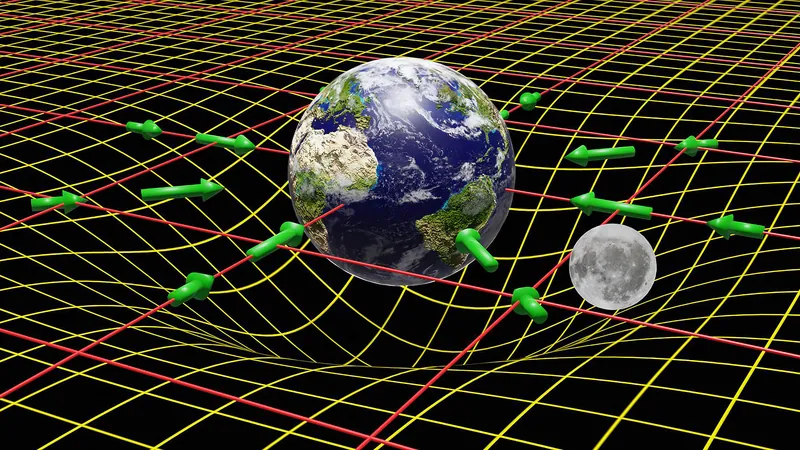
Revolutionary Leap Towards a 'Theory of Everything': Gravity Meets Quantum Physics!
2025-05-12
Author: Jessica Wong
The Quest for the Ultimate Rulebook of Nature
For centuries, scientists have been on a relentless pursuit to uncover a single set of rules that govern the universe. From the way apples fall to the orbits of planets, understanding these laws has been pivotal. While electromagnetism, strong force, and weak force have found their cohesive home in quantum physics, gravity remains a stubborn anomaly, rooted in Einstein's diverse theory of general relativity.
The Gravity-Quantum Conundrum
This disparity has kept physicists awake at night. While quantum mechanics describes particles in erratic, vibrant actions, general relativity presents gravity as smooth curves in the very fabric of space-time. Merging these perspectives often results in chaotic infinities that boggle the mind. However, a daring new approach may have cracked the code!
Finding Common Ground: A Bold New Perspective
Researchers Mikko Partanen and Jukka Tulkki from Aalto University believe they have found a potential bridge between these two realms. By situating gravity within a type of gauge theory—similar to the frameworks that govern light and atomic interactions—they are proposing a groundbreaking mathematical model.
Partanen asserts that success in this area could not only illuminate complex issues like black holes and the Big Bang but vastly improve essential technologies. For example, without Einstein’s gravitational insights, GPS systems would quickly become unreliable.
Unlocking the Mysteries of the Universe
Their innovative research introduces an eight-dimensional mathematical structure, positioning gravity alongside the other three fundamental forces. In contrast to the conventional dimensions we experience, this additional framework allows equations to function without resorting to nonsensical infinities.
Symmetry: The Key to Unification
Within this eight-dimensional space, special objects known as spinors convey information about gravity. The novel concept of a gravity gauge theory borrows symmetry from the well-established Standard Model of particle physics, enabling gravity to exist in harmony with the existing four-dimensional universe.
From Abstraction to Real-World Implications
Although the introduction of extra dimensions may sound ethereal, the theory translates this higher-dimensional mathematics into four tangible dimensions—allowing gravity to operate consistently with known physics under calm conditions like those experienced on Earth.
Taming Infinite Outcomes: A Closer Look
Previous attempts to quantize gravity faltered as computations spiraled into infinite anomalies. The Aalto team leans on a powerful tool known as renormalization. This methodology aims to transform these chaotic infinities into measurable, comprehendible outcomes.
If successful, this could allow physicists to accurately predict the probabilities of cosmic events—ensuring gravity can be treated with the same rigor as the other forces of nature.
All Eyes on Quantum Gravity: The Next Frontier
“A quantum theory of gravity is essential for understanding phenomena involving high gravitational fields and energies,” Partanen explains. The implications of their findings could even pave the way for answers to longstanding enigmas, like the mysterious matter-antimatter imbalance in the universe.
What Lies Ahead?
While the researchers acknowledge their work is not yet complete, their innovative framework invites collaboration from the broader scientific community. The dream is that, like quantum mechanics and relativity, these findings will unlock new realms of exploration in physics.
Should this venture succeed, gravity may finally step into the quantum limelight, enriching our understanding of how the universe cohesively operates.
A New Era of Discovery Awaits!
This pioneering research has been detailed in the journal Reports on Progress in Physics and has the potential to revolutionize our grasp of nature's fundamental forces.



 Brasil (PT)
Brasil (PT)
 Canada (EN)
Canada (EN)
 Chile (ES)
Chile (ES)
 Česko (CS)
Česko (CS)
 대한민국 (KO)
대한민국 (KO)
 España (ES)
España (ES)
 France (FR)
France (FR)
 Hong Kong (EN)
Hong Kong (EN)
 Italia (IT)
Italia (IT)
 日本 (JA)
日本 (JA)
 Magyarország (HU)
Magyarország (HU)
 Norge (NO)
Norge (NO)
 Polska (PL)
Polska (PL)
 Schweiz (DE)
Schweiz (DE)
 Singapore (EN)
Singapore (EN)
 Sverige (SV)
Sverige (SV)
 Suomi (FI)
Suomi (FI)
 Türkiye (TR)
Türkiye (TR)
 الإمارات العربية المتحدة (AR)
الإمارات العربية المتحدة (AR)